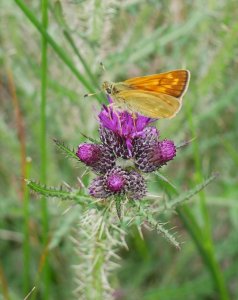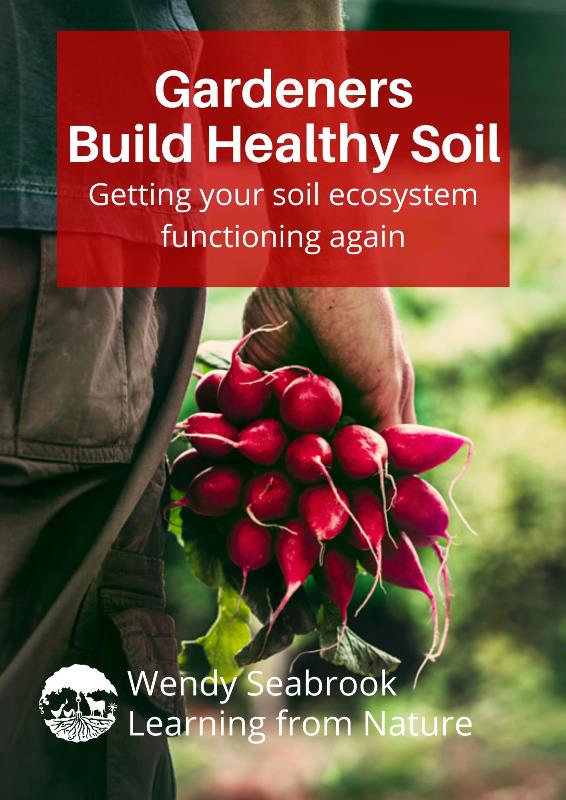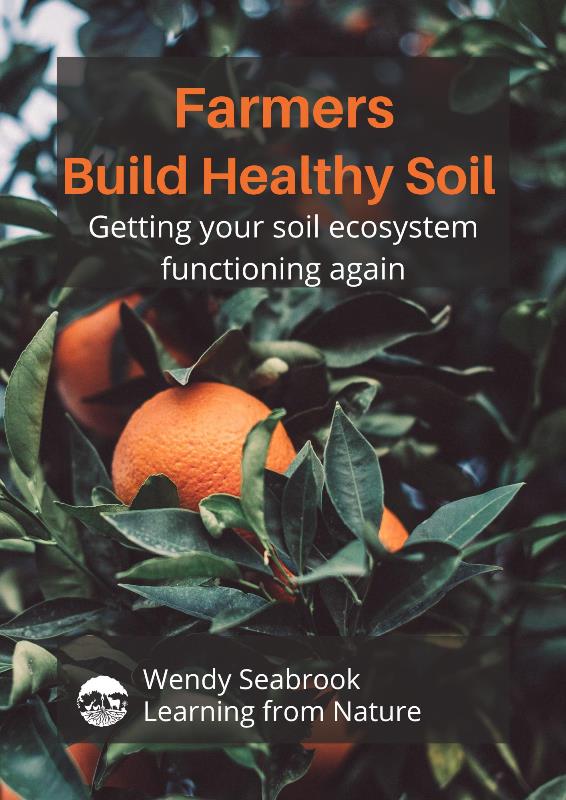Weeding is like mowing the lawn and washing the dishes – it’s never-ending! There are more rewarding things to do with our time!
There is a solution. Using them instead of removing them.
Hold on, wait a moment… before you click elsewhere… this is not such a ridiculous idea!
Using weeds makes a lot of sense because weeds are highly skilled at colonising degraded soil and helping soil organisms repair the soil. I’ll explain how in a moment.
Unfortunately, our soils are not in good working order. How do we know this? Because we have to keep feeding our plants and struggle to grow strong, pest and disease-resistant plants and nutrient-dense food. And when the weather turns bad, have trouble growing anything at all!
We can’t rely on our soil organisms to recycle the nutrients and feed them to our plants. Getting their support to improve our soil, it becomes easier to grow other plants leaving little room for weeds.

Weeds, like other plants, feed soil organisms. They give the microbes and invertebrates in our soil the resources to build healthy soil. By getting a regular, generous, and diverse diet of leaf litter, root tissues and root exudates (the sugars and proteins plants release from their roots), soil organisms can get on with the job they have had millions of years of on-the-job training to do – getting our soil ecosystems functioning again.
Soil organisms work 24/7 maintaining our soil infrastructure and recycling nutrients for plants to reuse.
Weeds are designed to colonise and repair degraded soil –
- Produce masses of seed with excellent seed dispersal mechanisms
- Seed generally remains viable in our soil for years, ready waiting for the right conditions to germinate
- Grow fast
- Protect soil from temperature extremes and water loss through evaporation
- Reduce compaction, runoff, and erosion.
They provide a living ground cover of ecological support plants. As such, we can use them to help us solve specific resource issues. For example, leguminous weeds increase nitrogen availability for other plants. Many weeds provide generous supplies of pollen and nectar, feeding the predators and parasites of our insect pests, bees and other insects pollinating our crops. Deep-rooted weeds – the ones that are hard to pull out of the ground! – help to reduce soil compaction and bring up nutrients most plants can’t reach.

Butterfly feeding on a Thistle (© Richard Szczerba)
All good reasons for not getting rid of weeds.
Can’t other plants do the job?
Weeds are obviously not the only plants to use. We can recruit others to help us. But when they are difficult to grow in the degraded soil conditions, why not use the weeds volunteering their services?
The health of your soil will improve with the weeds feeding your soil roots and root exudates; you periodically cutting and dropping them to supply mulch. You’ll naturally get fewer weeds, and it will become easier to get other plants established.
Stories from Farms and Gardens
I’d like to show you heaps of examples of farmers and gardeners working with weeds. But you’re joining a small group of pioneers using this eco-logical approach.
Property size doesn’t matter. I am experimenting in my veggie garden, but one of the largest vegetable producers in England, producing 50,000 lettuce/week, skillfully uses weeds in their lettuce and celery production. Another commercial grower I spoke to recently is starting trials, having estimated her weed removal cost to be between $1,000– $2,000 per hectare.
Lettuce growing with weeds at G’s Growers Ltd
At one of the Learning from Nature workshops, we saw what weeds can do in a citrus orchard. Where the rows hadn’t been managed for several years, the soil was healthier in comparison to those that had been mowed and manicured. In Sri Lanka, tea farmers get higher yields and harvest some of the weeds as leafy greens.
Getting Practical
In some situations, encouraging weeds may not be a good idea. For example, when weeds:
- Rapidly grow over the top of your crop
- Competitively exclude ecological support plants that would otherwise grow
- Produce seed early in the cropping cycle, contaminating your next crop
- Invade natural areas – our nature reserves, waterways, and national parks need all the help they can get!
- Quickly get out of control, for example, Field Horsetail (Equisetium arvense) and Black grass (Alopecurus myosuroides) in Europe, Paterson’s curse (Echium plantagineum) and Sicklepod (Senna obtusifolia) in Australia.
But don’t be too quick to judge.
Look closely at what the weed is doing and how its behaviour changes over time.
On my farm in Australia, I get masses of Sicklepod seedlings sprouting whenever there is bare ground. They are such a perceived problem, friends advised me not to buy the land. But I was lucky to have Hugh Lovel, a soil scientist visit the property and advise me otherwise. “Look at the pasture grasses growing around that patch and tell me what you see.” The benefits were clear. The grass was greener and more vigorous around the Sicklepod patch. “Sicklepod isn’t competing with your grasses. It’s improving your pasture with its deep roots and nitrogen-fixing bacteria.”
It was a game-changing moment for me. Never again would I be so ready to call plants weeds!
So remember, when you get ready to go out weeding again… that sometimes the most challenging obstacle to doing something differently is our fear of change. “What will the neighbours think!”
We can never be 100% certain how things will turn out. Start small.
Get Support using this Eco-logical Approach
Suggested articles –
Watch the videos on the Learning from Nature YouTube Channel.
Get practical support with repairing your soil ecosystem with these Handbooks for gardeners and farmers



